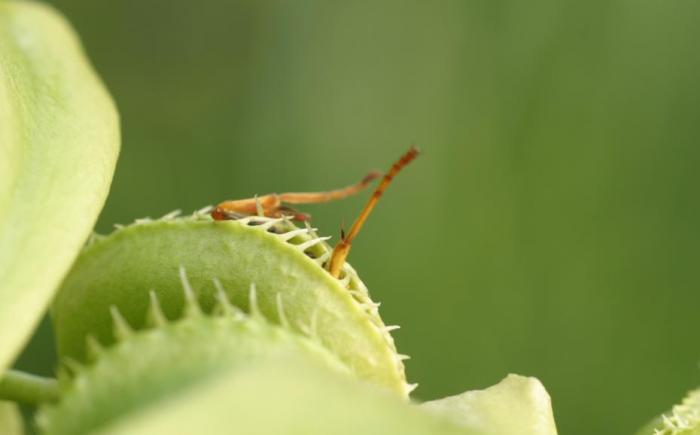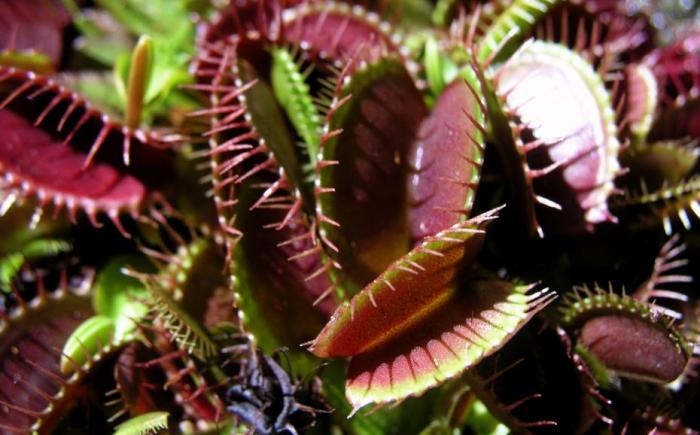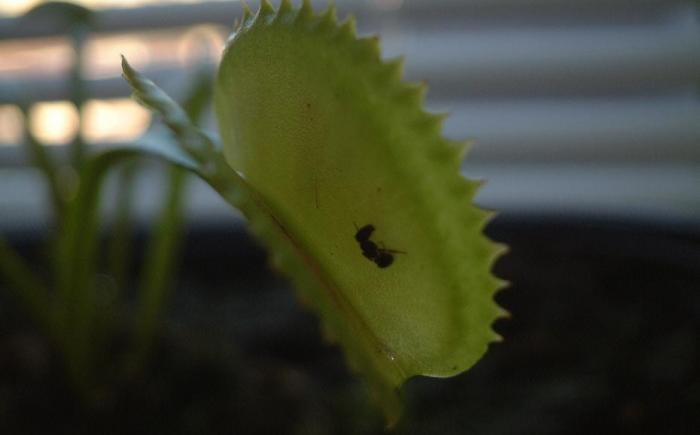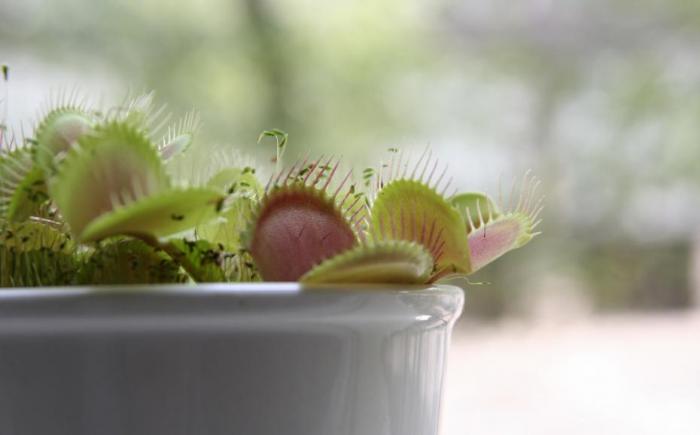
Venus Flytrap
The Venus Flytrap is a favorite for all ages. The carnivorous plant catches it's own prey - predominately insects and spiders by literally trapping them in the "mouth" of the plant. Prey is caught when they prey trigger the sensitive mirco hairs on the inner surfaces of the plant. After the initial trigger of the inner hair, the "mouth" of the Venus Flytrap will close if a second occurance triggers another hair within 20 seconds in order to save on wasted energy - leading the Flytrap to close up!
Openings between the "teeth" area of the plants allow for smaller prey to flee the trap. It's assumed the nutrients would not be worth the energy of digestion. If prey is unable to get away from the Venus Flytrap - the additional movement will lead the lobes of the "mouth" to further close and force the edges together. By forming this "stomach" the Venus Flytrap is then capable of beginning digestion, which takes about 10 days. Afterward the trap opens again is ready for another treat!
The mouth of a Venus Fly Trap can only open and close 3 times before that individual part dies off. Feeding the Flytrap every now and then with flies is ok but not meant for everyday amusement. If you enjoy the Venus Flytrap other plants we recommend are Sundew and the Pitcher Plant. Typically during the winter months Alsip Home & Nursery carries these other varieties.
Care
- Bright indirect light, away from direct sun.
- Keeping the soil moist at all times using rainwater is the most important part to care for this plant.
- Keeping the air around the plant humid is second to rainwater. Typically placing the Fly Trap on a saucer with pebbles and water helps take care of the watering and humid air.
- The cap on this plant also helps keep the air humid around the plant.
- The Venus Fly Trap does not need to eat flies anymore for survival.
- When one of the heads turns black trim the entire part to the base of the plant.
- When replanting, use sphagnum peat moss or an acidic water holding soil.
















